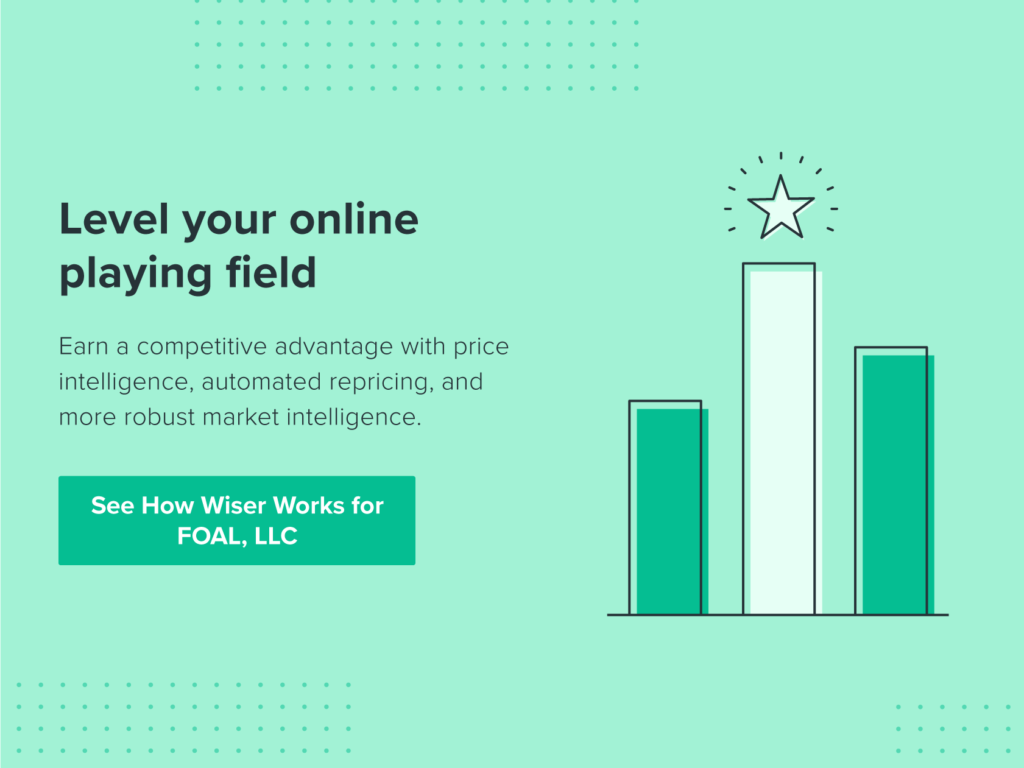How did the biggest brands and retailers in the world get to the top? In part, they understood the competition.
You can’t be the best—and stay the best—unless you know how you compare to your competitors, how you are different, and how you can capitalize on their mistakes to grow your market share.This is especially true regarding price. Consumers are incredibly price sensitive. It’s easier than ever to compare prices both in-store and online, and they’ll jump to your competitors if they offer more value.
That’s why a strong and strategic competitive pricing analysis is a requirement for success in retail. Know who your competitors are and how you rank with regard to price. Then, you can create an effective strategy to beat those competitors and join the best in retail at the top of the food chain.
What is a Competitive Pricing Analysis?
Competitive analysis is the process of researching competitors to better understand their strengths and weaknesses, then comparing that research to your own business to improve your operations.
This type of competitive intelligence is important because it allows businesses to understand their place in the retail environment and can provide a competitive advantage, highlighting possible business opportunities.
Analyzing competitive pricing in-depth will identify where you fit into the retail landscape based on price point: are you a bargain brand or retailer, premium or luxury, or somewhere in the middle? Where can you decrease prices to gain a competitive edge? Increase them to grow margins?
Furthermore, tracking your competitors will highlight their existing pricing strategies. Are they like Amazon, which reprices by the minute? Or do they change prices much slower? You can optimize your prices once you know what the competition is doing.
Competitive analysis is the process of researching competitors to better understand their strengths and weaknesses, then comparing that research to your own business to improve your operations.
Competitive intelligence provides you with actionable data, so your business can take steps to improve its strategy.
How to Perform a (Price) Competitor Analysis
You know you need to compete when it comes to price. What you may not know is who your competitors are and how they stack up in the pricing department.
Moreover, your competitors may not be who you think—your true competitors are the ones that are stealing your customers. Follow these seven steps to identify, evaluate, and understand your competitors so you can price properly.
Step 1: Identify Your True Competitors
Begin with Google. It’s where your customers start their shopping, and it’s where you should start your primary research on competitive pricing.
A quick Google search will help you narrow down the list of potential competitors. Type in the name of your product, service, or industry. See what comes up. Whether you recognize any or not, jot down the companies that pop up.
Google is such a powerful tool for consumers that you should absolutely use it to help with competitive analysis.
Search your product, and Google will tell you the most important, relevant companies for that product (in their eyes). Those are the same results your prospects will see.
You can also use SEO analysis tools to narrow down the list of companies depending on a specific keyword—again, your products make a good starting point. Some tools include SEMRush, Moz, and Ahrefs. All of these can provide competitive intelligence insights, leading to actionable opportunities for your company’s improvement.
Step 2: Categorize the Competition
Speaking of SEO tools, keep in mind that your “search” competitors—those that rank highly for your product keywords—may not be your business competitors—those that are taking your customers. However, both are important to track for various reasons.
For example, you want to know your search competitors so you can beat them on Google, rank higher, and drive more visitors to your website (and thus more potential prospects). You naturally want a competitive advantage over your business competitors so you can beat them in sales and profit.
Expanding on this idea, your next step should be to categorize the competition. Segment your list into main competitors and secondary competitors. Dig deeper and break them into search competitors, or price competitors. You can also create a list of new competitors, or those who have products you want to develop one day.
These lists help you customize your strategies depending on how they compete (on Google, in real life, based on price, product, or something else).
Step 3: Read Competitor Content
How do your rivals talk about themselves? The products you have in common? Find out by reading all the content they post on their websites or share inside their brick-and-mortar stores, if relevant.
Start with the easy ones, such as their blog posts. Their target audience is likely the same as yours.
See how they describe their products or solutions, as this will help you narrow down more search terms for Step #1 and could illuminate additional competitors.
You should also download any gated content like whitepapers and eBooks if they have any. Better yet, download their brochures or product guides. See if they have any videos and watch those or subscribe to their newsletters. Don’t forget to visit their social media profiles as well, as their social media presence can be informative.
All of this web copy is great insight into their processes and products.
See how competitors describe their products or solutions, as this will help you narrow down more search terms for Step #1 and could illuminate additional competitors.
Step 4: Analyze Competitor Prices
Next up is a big one: price analysis. One of the main reasons to analyze the competition is to optimize your own prices for the market; it’s a huge advantage to know how they price. As you’re tackling Step #3 and reading all their content, keep an eye out for any listed prices and write them down.
Ideally, your competitors will have product listings on major eCommerce marketplaces. Use pricing intelligence tools to check each one and see if the prices are different. Make note of any pricing strategies you observe.
You may want to swing by any brick-and-mortar location if your competition is sold there (or is a retailer). Again, write down their prices. The goal isn’t to know their prices and then price lower. A lower price isn’t always a winning price.
Instead, the goal is to understand how they price. Do they price aggressively online? Do they reprice regularly? Do they run frequent promotions? Are they deceptive in their pricing? These insights will help you create your own data-driven pricing strategies.

Step 5: Compare Your Websites
Good competitor analysis also includes an overview of each company’s online presence, specifically their websites.
Websites provide good information because they’re representative of the customer journey. Does the website look like it was last updated in the ’90s? Does everything work or are there broken links and missing images? If there’s a webstore, does that checkout experience go smoothly, or is it slow and painful?
You’ll want to compare their websites to your own to see which is better from a customer perspective. Knowing what’s working or not working can help you to be strategic with your own online presence.
Overall, your goal should be to have a clear, easy-to-use online experience that works as advertised. On the contrary, a poor experience could be the deciding factor for a shopper to leave your site and go to the opposition.
Step 6: List Out Value Propositions
Nearing the end of your analysis, now is a good time to make a list of your value propositions compared to your competition. These are the reasons why a shopper will buy a product or service from a business, yours included. What is important to these shoppers? Is it convenience? Value? Quality? Something else?
Consider where you overlap value props with your competition. Where there’s overlap, shoppers may move down to the next important proposition to make their buying decision. These are areas you can optimize to win when other things are equal.
Also, take note of value props that may not matter to consumers. These could be items that are emphasized in marketing or sales materials, but in reality, aren’t moving sales one way or the other.
Typically, these are hypotheses or misunderstandings from the company that didn’t pan out. And that’s OK—but these analytics tell you how to revise your strategy to gain a competitive edge.
Step 7: Read Customer Reviews
Lastly, check out all the customer reviews you can find on your business and your competition. Many shoppers are swayed by third-party validation. Does this product have five stars? Are the reviews positive? What are people saying about quality, shipping, value, and more?
Therefore, you should know exactly how consumers view your competition. This type of market research will help you identify areas where you beat them. Maybe people think your business is a better deal or higher quality. Or, maybe not—but now you have actionable next steps for improvement.
A good business strategy is to know what your shoppers want, how they currently think, and deliver a product or service tailored to their needs. Their own reviews can show you the way forward.
Analyze Competitors to Win on Price
Complete all seven steps, and you’ll have a clearer picture of where your business fits into the market. From a price perspective, this is a must to price confidently and effectively, whether your average deal size is $5 or $500,000. Importantly, don’t make competitive analysis an afterthought or a one-off. It should be a constant process that is well-integrated into your day-to-day decision-making.
Just as prices change, your direct competitors change. You need to know what is going on in order to make strategic decisions that will grow your business.
Editor’s Note: Contributing writer is Alexandria Flores. This post was originally published in September 2019 and has since been updated and refreshed for readability and accuracy.















